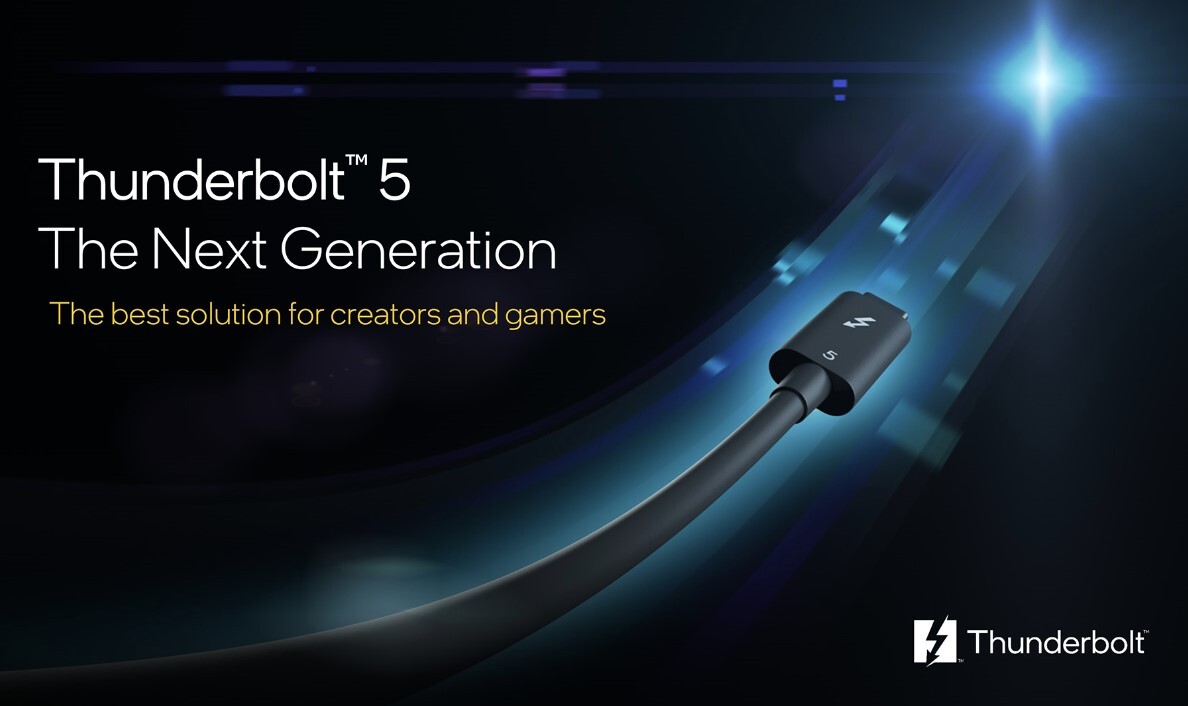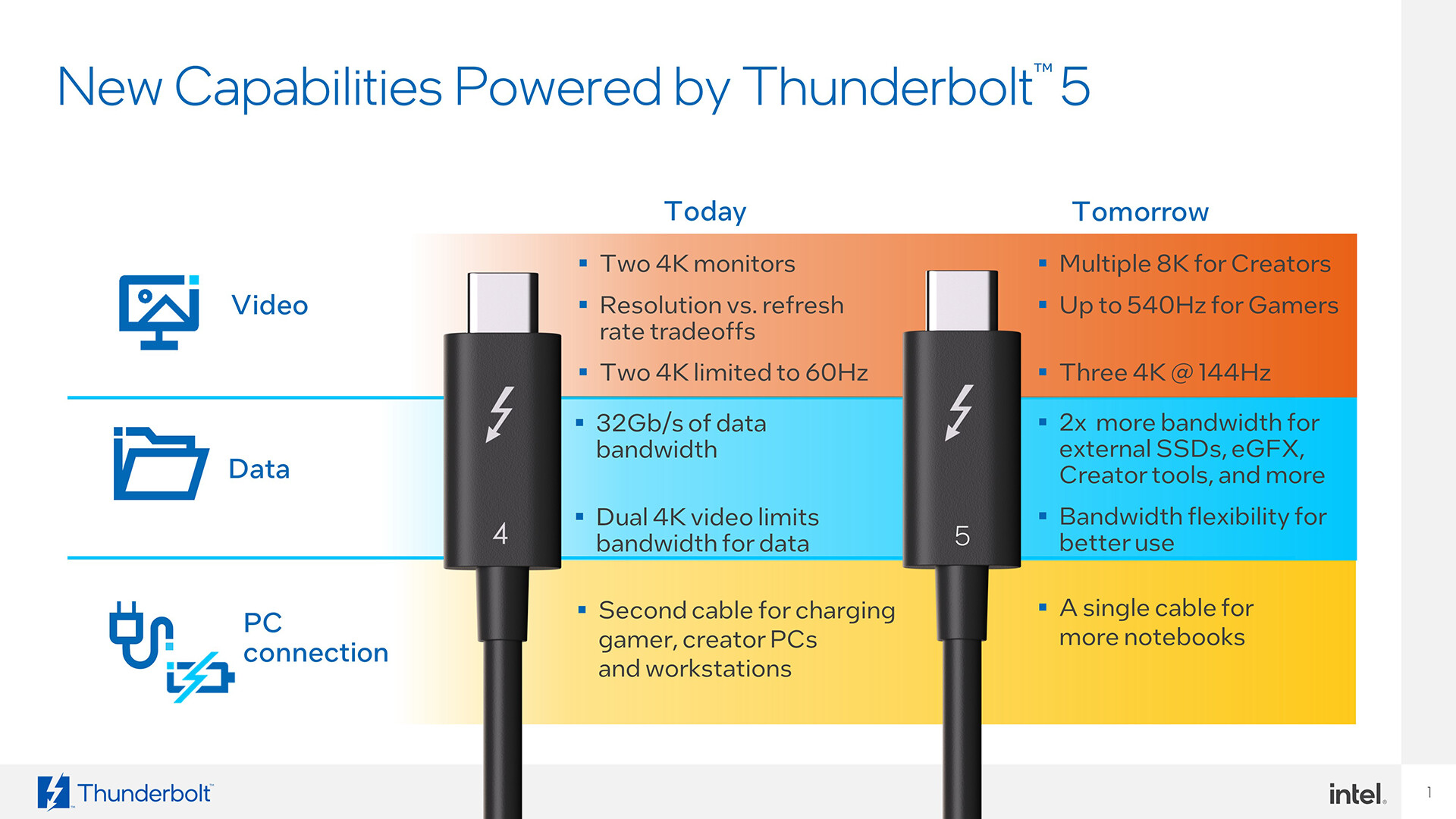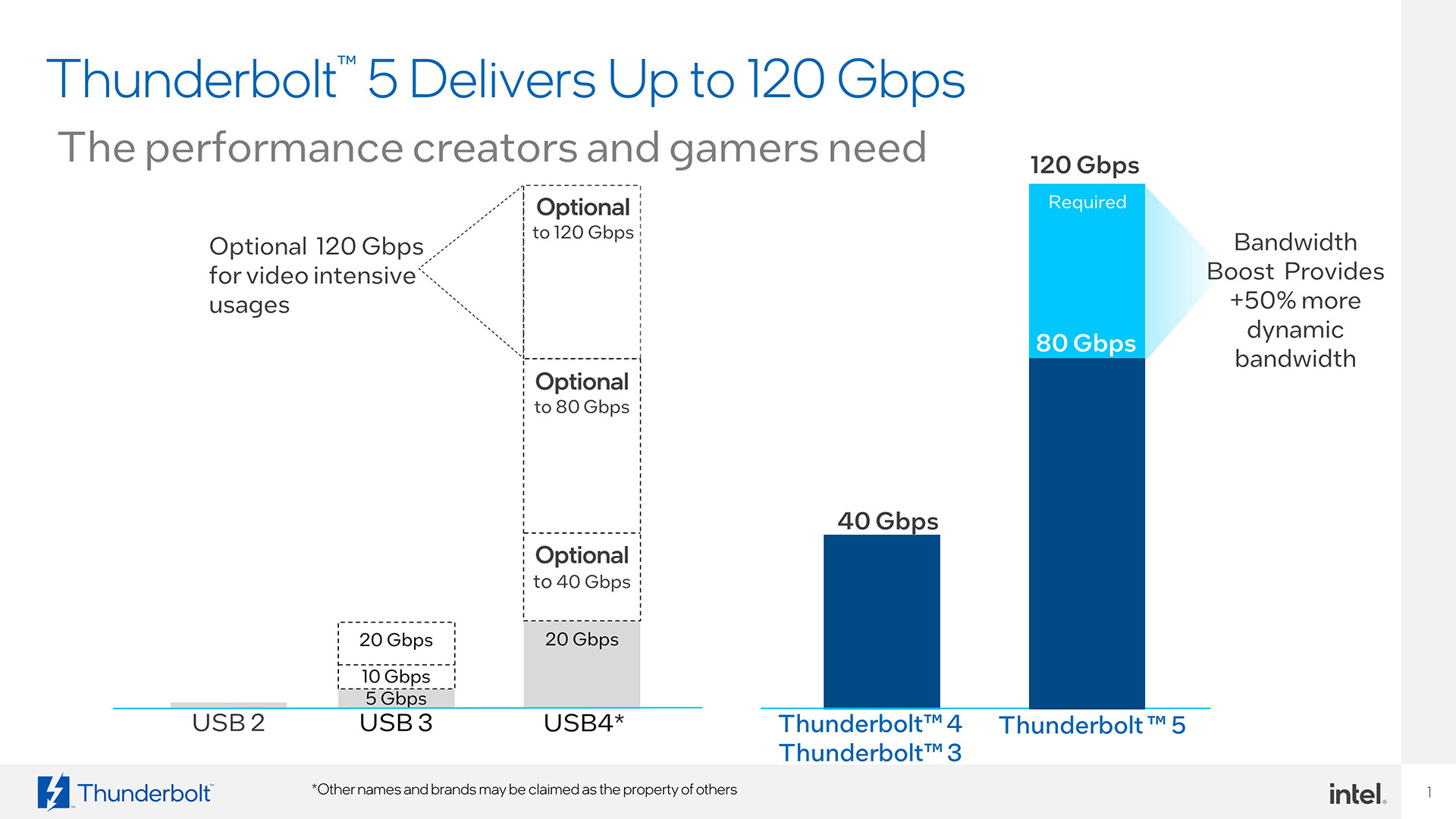Intel Announces Thunderbolt 5 with Improved Connectivity Speed and Bandwidth
Intel has unveiled Thunderbolt 5, the next generation of Thunderbolt, promising significant improvements in connectivity speed and bandwidth for computer users. The announcement was accompanied by a demonstration of a prototype laptop and dock.
According to Jason Ziller, the general manager of the Client Connectivity Division at Intel, Thunderbolt 5 will offer industry-leading performance and capability for connecting computers to monitors, docks, storage, and more. With Thunderbolt now being the mainstream port for connectivity on mobile PCs, Thunderbolt 5 aims to provide even more capability for demanding users.
Thunderbolt 5 will deliver 80 gigabits per second (Gbps) of bi-directional bandwidth, which can be boosted up to 120 Gbps with Bandwidth Boost for an enhanced display experience. This represents up to three times more bandwidth than the current best connectivity solution, ensuring outstanding display and data connections. The new Thunderbolt will meet the high bandwidth needs of content creators and gamers.
Thunderbolt 5 will be built on industry standards, including USB4 V2, and will be compatible with previous versions of Thunderbolt and USB.
The increasing bandwidth needs of content creators, gamers, and professionals are a driving force behind Thunderbolt 5. These users require high-resolution displays and low-latency visuals while working with larger video and data files. Thunderbolt 5 aims to massively improve connectivity speed and bandwidth to provide modern PC users with the highest-quality visuals and immersive experiences for years to come.
Microsoft is collaborating closely with Intel to bring the latest USB4 standard to Windows customers. Ian LeGrow, the corporate vice president of Core OS product management at Microsoft Corp, stated that Thunderbolt 5 is fully USB 80 Gbps standard compliant, supporting the next generation of high-performance displays, storage, and connectivity.
Thunderbolt 5 builds upon Thunderbolt 4 in several ways, including doubling the total bi-directional bandwidth, providing up to three times the throughput for video-intensive usage, doubling the PCI Express data throughput for faster storage and external graphics, and doubling the bandwidth of Thunderbolt Networking for high-speed PC-to-PC connections. It also utilizes a new signaling technology, PAM-3, to deliver these performance increases with today's printed circuit boards, connectors, and passive cables up to 1 meter.
Thunderbolt products have become mainstream in the PC marketplace, with leading PC accessory vendors worldwide adopting the standard. Thunderbolt 5 will continue to build on this success and deliver on the vision of one USB-C port and cable that can handle all connectivity needs, simplifying the PC experience for users globally while maintaining high quality and performance.
Intel has a long history of leading the industry in input/output (I/O) innovation, and Thunderbolt 5 is another milestone in this regard. The company works closely with PC, accessory, and cable partners to provide advanced and complete wired connectivity solutions through dedicated enabling and testing programs.
All Thunderbolt products undergo rigorous certification testing to ensure optimal performance for the PC industry. Products that pass this testing can use the Thunderbolt brand without royalty fees. This has made Thunderbolt a globally recognized indicator of the best wired connectivity solutions for PCs and accessories.
Computers and accessories based on Intel's Thunderbolt 5 controller, code-named "Barlow Ridge," are expected to be available starting in 2024.


